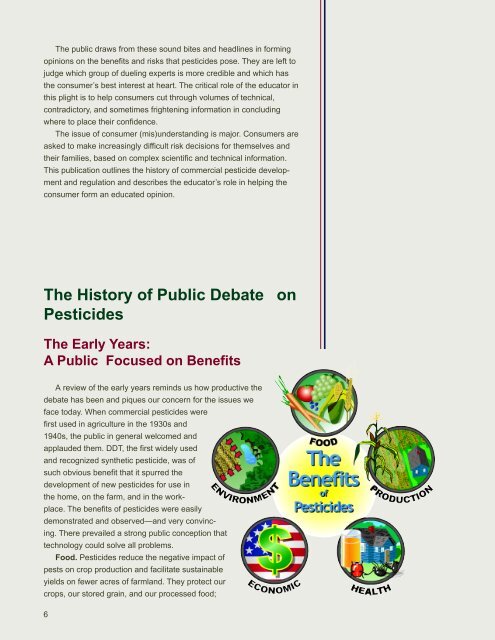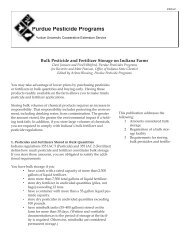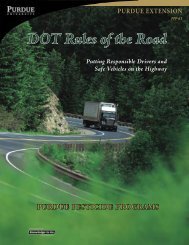Pesticides and Risk Communication PPP-52 - Purdue Pesticide ...
Pesticides and Risk Communication PPP-52 - Purdue Pesticide ...
Pesticides and Risk Communication PPP-52 - Purdue Pesticide ...
Create successful ePaper yourself
Turn your PDF publications into a flip-book with our unique Google optimized e-Paper software.
The public draws from these sound bites <strong>and</strong> headlines in forming<br />
opinions on the benefits <strong>and</strong> risks that pesticides pose. They are left to<br />
judge which group of dueling experts is more credible <strong>and</strong> which has<br />
the consumer’s best interest at heart. The critical role of the educator in<br />
this plight is to help consumers cut through volumes of technical,<br />
contradictory, <strong>and</strong> sometimes frightening information in concluding<br />
where to place their confidence.<br />
The issue of consumer (mis)underst<strong>and</strong>ing is major. Consumers are<br />
asked to make increasingly difficult risk decisions for themselves <strong>and</strong><br />
their families, based on complex scientific <strong>and</strong> technical information.<br />
This publication outlines the history of commercial pesticide development<br />
<strong>and</strong> regulation <strong>and</strong> describes the educator’s role in helping the<br />
consumer form an educated opinion.<br />
The History of Public Debate on<br />
<strong><strong>Pesticide</strong>s</strong><br />
The Early Years:<br />
A Public Focused on Benefits<br />
A review of the early years reminds us how productive the<br />
debate has been <strong>and</strong> piques our concern for the issues we<br />
face today. When commercial pesticides were<br />
first used in agriculture in the 1930s <strong>and</strong><br />
1940s, the public in general welcomed <strong>and</strong><br />
applauded them. DDT, the first widely used<br />
<strong>and</strong> recognized synthetic pesticide, was of<br />
such obvious benefit that it spurred the<br />
development of new pesticides for use in<br />
the home, on the farm, <strong>and</strong> in the workplace.<br />
The benefits of pesticides were easily<br />
demonstrated <strong>and</strong> observed—<strong>and</strong> very convincing.<br />
There prevailed a strong public conception that<br />
technology could solve all problems.<br />
Food. <strong><strong>Pesticide</strong>s</strong> reduce the negative impact of<br />
pests on crop production <strong>and</strong> facilitate sustainable<br />
yields on fewer acres of farml<strong>and</strong>. They protect our<br />
crops, our stored grain, <strong>and</strong> our processed food;<br />
6




